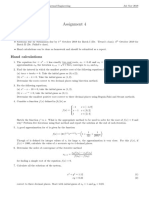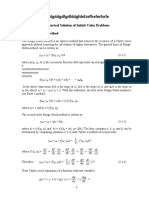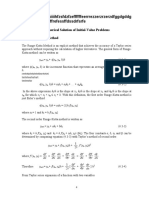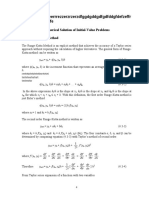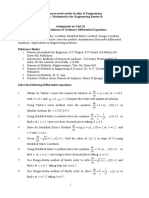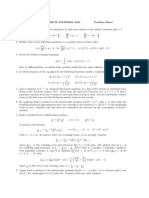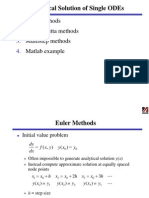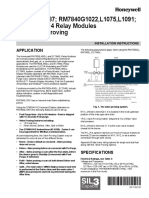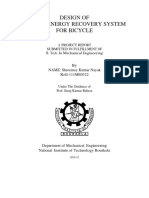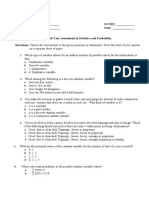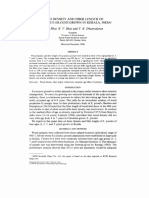0% found this document useful (0 votes)
13 views3 pagesAssignment 6
1. The document describes Assignment 6 for the numerical methods course ME 5107. It involves hand calculations and programming problems for solving ordinary differential equations numerically.
2. For the hand calculations section, students are asked to determine coefficients for a numerical method, find maximum step sizes, and verify the modified wavenumber for a numerical scheme.
3. For the programming section, students must implement several numerical methods (Euler, Runge-Kutta, etc.) to solve an initial value problem and analyze the order of accuracy based on the error. Formulations of the numerical methods are provided.
Uploaded by
Jouhar SheikhCopyright
© © All Rights Reserved
We take content rights seriously. If you suspect this is your content, claim it here.
Available Formats
Download as PDF, TXT or read online on Scribd
0% found this document useful (0 votes)
13 views3 pagesAssignment 6
1. The document describes Assignment 6 for the numerical methods course ME 5107. It involves hand calculations and programming problems for solving ordinary differential equations numerically.
2. For the hand calculations section, students are asked to determine coefficients for a numerical method, find maximum step sizes, and verify the modified wavenumber for a numerical scheme.
3. For the programming section, students must implement several numerical methods (Euler, Runge-Kutta, etc.) to solve an initial value problem and analyze the order of accuracy based on the error. Formulations of the numerical methods are provided.
Uploaded by
Jouhar SheikhCopyright
© © All Rights Reserved
We take content rights seriously. If you suspect this is your content, claim it here.
Available Formats
Download as PDF, TXT or read online on Scribd
/ 3




